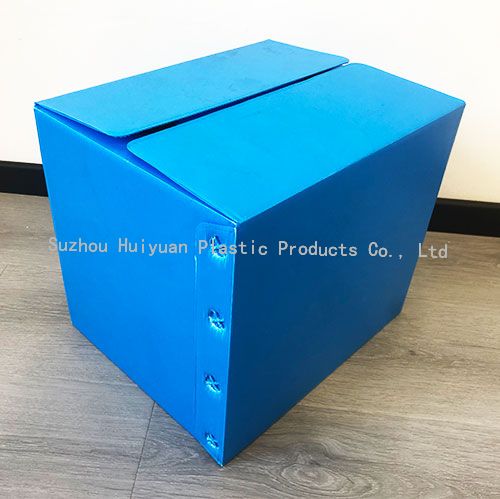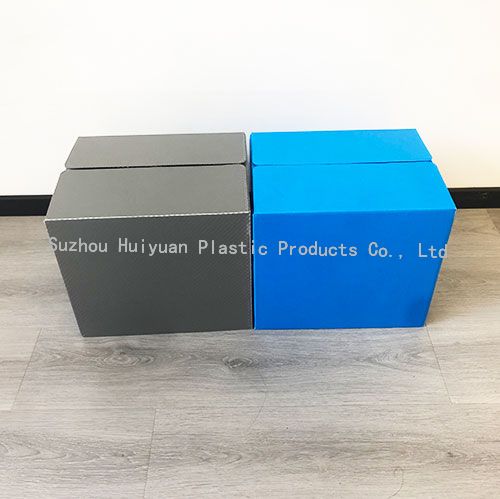©Copyright 2019 Suzhou Huiyuan Plastic Products Co., Ltd All rights reserved. Terms and Conditions Designed by iwonder.cnSite Map
When it comes to packaging solutions that balance durability, cost-effectiveness, and adaptability, the plastic cardboard box has become an increasingly popular choice across various industries. Beyond its apparent utility, this packaging option offers a host of benefits that make it indispensable in logistics, retail, storage, and even consumer-facing applications. In this article, we will explore why businesses and individuals are turning to plastic cardboard boxes and how they can optimize their usage for maximum efficiency.

The versatility of the plastic cardboard box is evident across multiple sectors. In warehousing and logistics, these boxes are preferred for their structural strength and ability to withstand repeated handling. Unlike traditional cardboard, plastic cardboard boxes resist moisture, tearing, and compression damage, which makes them ideal for long-distance shipping and storage in variable environmental conditions. Businesses dealing with perishable items, electronics, or sensitive goods often rely on them to reduce product loss during transit.
Retailers also benefit from using plastic cardboard boxes for both storage and display purposes. With the ability to produce them in a range of sizes, shapes, and colors, these boxes can be customized to fit specific product lines or branding strategies. For example, fashion retailers often use sleek, visually appealing boxes to transport seasonal clothing or accessories, combining protective functionality with marketing appeal.
In the food industry, plastic cardboard boxes have gained traction due to their hygienic properties. Their smooth, non-porous surfaces are easier to sanitize compared to traditional cardboard, reducing the risk of contamination. This is particularly important for businesses shipping bakery items, packaged meals, or frozen products, where maintaining hygiene is critical.
One of the most attractive features of the plastic cardboard box is its design flexibility. Manufacturers can produce boxes in a wide variety of dimensions, colors, and styles, catering to both functional and aesthetic requirements. Some boxes are equipped with interlocking lids, handles, or reinforced edges, enhancing ease of transport and structural integrity.
Moreover, companies can incorporate branding elements directly into the box design. Embossed logos, colored panels, or printed patterns allow businesses to maintain a professional and consistent image throughout the supply chain. This approach not only improves brand recognition but also adds a layer of sophistication to product presentation, which is especially beneficial for premium or gift items.
Innovations in plastic box design have led to collapsible and stackable models, optimizing storage and reducing shipping costs. Collapsible designs enable businesses to save warehouse space when boxes are not in use, while stackable boxes maximize vertical storage efficiency during transit and on retail shelves.
A significant advantage of the plastic cardboard box is its durability. Traditional cardboard may weaken under exposure to moisture, weight, or rough handling, leading to potential product damage. In contrast, plastic cardboard boxes are resistant to water, mold, and general wear and tear. This makes them particularly valuable in industries where repeated use is common, such as in manufacturing, logistics, or moving services.
The longevity of plastic cardboard boxes translates to cost savings over time. Although the initial investment may be higher compared to standard cardboard, the reduced need for replacements and the ability to reuse boxes across multiple cycles can lead to significant operational efficiencies. Businesses that invest in durable, high-quality boxes often find that they reduce packaging waste and shipping incidents simultaneously.
Sustainability has become a central concern in packaging, and the plastic cardboard box presents opportunities for environmentally conscious practices. Many manufacturers now produce boxes using recyclable or partially recycled materials. Additionally, the reusability of plastic cardboard boxes reduces the frequency of disposal compared to single-use packaging solutions.
For companies aiming to lower their carbon footprint, using durable plastic cardboard boxes can be a practical step. By integrating these boxes into a circular logistics system, businesses can minimize packaging waste, reduce the demand for raw materials, and improve overall environmental performance. Consumers are increasingly attentive to sustainable practices, and the adoption of reusable packaging can enhance a brand's reputation and customer loyalty.
The practical benefits of plastic cardboard boxes also extend to operational efficiency. Their stackable and modular nature simplifies warehouse organization, making it easier for workers to handle inventory, locate products, and optimize storage. For businesses involved in e-commerce, these boxes can streamline packing processes, reducing labor time and minimizing product movement errors.
From a cost perspective, while plastic cardboard boxes may require a higher upfront investment, they often result in long-term savings. Reduced product damage, fewer replacements, and efficient storage all contribute to a lower total cost of ownership. Furthermore, the ability to reuse and customize boxes allows businesses to adapt their packaging to seasonal or promotional needs without recurring expenditures on entirely new packaging solutions.

To make the most of plastic cardboard boxes, businesses and individuals should consider several key factors. First, selecting the correct size and weight capacity is essential to ensure protection without unnecessary bulk. Overloading boxes can compromise their structural integrity, while underutilization may result in wasted space and higher shipping costs.
Second, evaluating the storage environment can help determine whether additional features are necessary. For example, boxes intended for outdoor storage may require UV resistance, while those used in cold storage should withstand low temperatures without cracking. Third, investing in quality boxes from reputable manufacturers ensures consistent performance and longevity, reducing the likelihood of damage or operational issues.
Finally, incorporating a labeling or coding system can improve inventory management and workflow efficiency. Clear markings allow for easier identification, faster picking processes, and streamlined returns or restocking procedures.
The plastic cardboard box from huiyuansjplastic.com has proven itself as a versatile, durable, and efficient packaging solution across industries. Its adaptability to diverse applications—from retail displays to logistics operations—combined with its durability, environmental potential, and design flexibility, makes it a compelling choice for businesses seeking to optimize their packaging strategy. By carefully selecting, customizing, and maintaining these boxes, companies can not only enhance operational efficiency but also contribute to sustainable practices and improve customer satisfaction.
In an era where logistics efficiency, cost management, and brand presentation are crucial, the plastic cardboard box continues to stand out as a smart, practical, and forward-looking solution. Businesses willing to invest in quality, reusable boxes are likely to reap both operational and reputational benefits, making this packaging option a valuable component of modern supply chain and retail strategies.
By continuing to use the site you agree to our privacy policy Terms and Conditions.